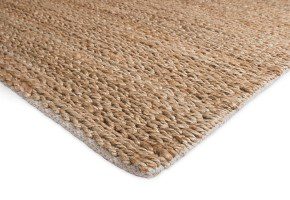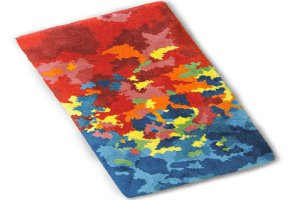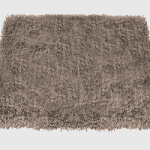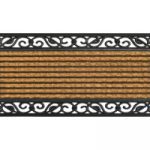A variety of other studies have also found that sober living homes appear to be an effective component of the recovery process. After you’ve found a sober living facility you’re interested in, you then apply and undergo an interview. Your monthly cost to live in a sober home depends on the rental costs, the number of residents, and other factors. The number of residents in a sober living facility varies by location, facility size, demand, and other factors. An Oxford House can accommodate six to 15 people, with the average number of residents being eight. In most cases, you will share a room with a peer, which helps build camaraderie and reduces the cost to individual residents.
- Addiction is a chronic and relapsing brain disorder with relapse rates of between 40% and 60% similar to the relapse rates of other chronic health conditions.
- Morgan is a mental health counselor who works alongside individuals of all backgrounds struggling with eating disorders.
- Since sober living typically follows addiction treatment, getting a referral from the treatment provider is recommended.
- Here, you’re surrounded by individuals who understand the challenges of addiction recovery firsthand.
- In the fall of 2021, he entered a program paid for by Medicaid that offered a room at a sober living home, his father said.
- Advantages of sober living homes include peer support, accountability, structure, independence, supervision, relapse prevention, life skills training, career coaching, 12-Step involvement, and more.
A better life after substance use treatment
“The state of Arizona owes our tribal nations an apology,” Mayes, the attorney general, said during the May 2023 press conference. In November 2024, her office announced a $6 million grant program for tribal nations affected by the sober living home fraud. A spokesperson said only tribes and nonprofits in Arizona can apply for the money. According to police, Jeffrey Hustito checked into another sober living home on Dec. 26, this one in the suburb of Glendale. He later smoked fentanyl with another resident and laid down to sleep around 1 a.m.
Level III: Supervised
However, if your home environment isn’t stable, returning can potentially result in a big setback in your recovery journey. If your home still holds the people and things that trigger your substance use, returning could cause you to relapse.1 Sometimes it helps to separate from the people and places contributing to your addiction. Sober living homes are an effective resource for individuals who have completed treatment and are ready to begin their lives in recovery. They provide a balance of supervision and independence that allows people to transition back to work, school and daily life.
How Long Can You Stay in a Sober-Living House?
Understanding the concept and advantages of sober living homes is essential, whether you’re beginning your recovery journey or looking to strengthen it in a community setting. While one person may be ready to re-enter society after three months, others may benefit from staying longer. A tailored aftercare plan paired with a relapse prevention plan can help you stay away from triggers.
- These homes aren’t just spaces where individuals reside during recovery; they’re environments meticulously designed to foster sobriety and personal growth.
- There are many types of sober living environments, including single-family homes, apartments, and buildings in close proximity.
- Prolonged misuse of drugs and alcohol shatters skills, making it problematic to step into a healthier lifestyle without dependencies.
- Sober living homes offer residents the benefits of peer support, regular house meetings, and access to community resources and support groups, which are essential for maintaining abstinence and mental health.
Sober Living Homes
Other referral sources may include the criminal justice system, a mental health professional, Twelve Step meeting participants, or friends and family. Whatever the source of the referral, take a tour of the facility and talk to the people living there to decide if it’s the right fit for you. Unlike the unpredictable environments you might find outside, these homes establish a routine and rules that foster a safe space for recovery. You’re expected to follow guidelines, which often include curfews, chores, and mandatory participation in recovery meetings.
At Del Arroyo Recovery, it’s not just about preventing relapse; it’s about empowering you to live your best sober life. This includes developing life skills, engaging in employment or education, and building a support network—all critical elements in the long-term success of recovery. Some recovery homes have set curfews and a sign-in/sign-out as part of their house rules. Recent rehab graduates may also have a senior member of the house assigned to accompany them when they leave.
Many sober living homes provide essential life skills training to help residents navigate everyday life within a supportive sober living community. Sober living homes typically incorporate group therapy, and most sober living homes function similarly to a halfway house, offering support from sober peers to promote lasting recovery. Sober living homes are generally less strict than halfway houses and allow residents more independence in terms of curfew, visitors, and access to technology.
This was a home, typically placed in low-income housing, that enforced policies around sobriety and required attendance to AA meetings. Meetings were held both in the home and in neighboring organizations in the community. Read on to learn about what a sober living house is, the history of sober living homes, types, who should go to one, and how you can find a sober living house. Nor have they received an acknowledgment of their loss — not from AHCCCS or the owners of the sober living homes sober house where he stayed. Snyder did not mention the fraudulent facilities several days later when she went before a legislative committee to discuss a recent audit shortly before stepping down as AHCCCS director. The audit, conducted every 10 years, is used by legislators to evaluate the future of state agencies.
For instance, in cities like Los Angeles, the average cost tends to settle around $900, with options for basic dorm-style living being more affordable. This focus on voluntary participation is what makes sober living homes an appealing option for many seeking to maintain sobriety. It would also be helpful if the house were near your work or school, a grocery store, public transit, a laundromat, and a healthcare provider. Level four sober homes are typically a branch of a larger organization with a hierarchy of authority.
Women-only houses tend to focus on providing mental health support for their residents. Level III homes employ administrative staffers, such as a facility manager and certified staff of case managers, and maintain an organizational hierarchy. Adding on to previous Levels’ services, Level III includes an emphasis on life skill development, offsite clinical services and in-house service hours. AZCIR is part of the Mental Health Parity Collaborative, a group of newsrooms that are covering stories on mental health care access and inequities in the U.S.
Failure to Treat Addiction Is Leading to Unnecessary Deaths
At this level, it is often mandatory for residents to participate in community meetings, house meetings, mutual support groups, buddy systems, and outside clinical appointments. Sober living homes provide safe, sober environments to help people in recovery transition back into their community using their recovery skills. While a sober living house doesn’t offer individual or group counseling, it offers structure and support to help you maintain your sobriety. Additionally, maintaining your sobriety typically requires a home that is free of substances. Sober living facilities are often thought of as https://appsychology.com/living-in-a-sober-house/ a sober person’s pipeline to life in mainstream society. That summer, AHCCCS staff were wrestling with how to keep providers from reaping huge profits with a single billing code meant for serving people in need of intensive outpatient help for addiction, including counseling.
This may involve attending outpatient therapy sessions or engaging with peer support group meetings. Residents will also be expected to share household chores and responsibilities. Sober living homes do not provide addiction treatment, and these communities are not a substitute for rehab. Overall, sober living homes aim to provide a supportive and structured environment that promotes long-term sobriety, personal growth, and successful reintegration into society. Mostly in residential neighborhoods, making all the difference in their recovery journey. Finding a sober house is a first step for individuals healing from substance abuse as they face numerous challenges, including the risk of relapse after finishing treatment programs.
Sober living programs offer extended support to people recovering from drug or alcohol addiction. Most program participants are in the process of transitioning from intensive substance abuse treatment to independent living. In sober living homes, you’re not just renting a room; you’re investing in your future.




 Round Rugs
Round Rugs  Wool Rugs
Wool Rugs  Vintage Rugs
Vintage Rugs 


 Carpet Tiles
Carpet Tiles  Carpet
Carpet 
 Embossed Rug
Embossed Rug  Plain Rug
Plain Rug 
 2.5'*4'
2.5'*4'  2'*3'
2'*3'  3'*5'
3'*5'  5*7.5
5*7.5 













 Artificial Grass
Artificial Grass  Mats
Mats 
 Soil
Soil  Fertilizer
Fertilizer  Pesticides
Pesticides